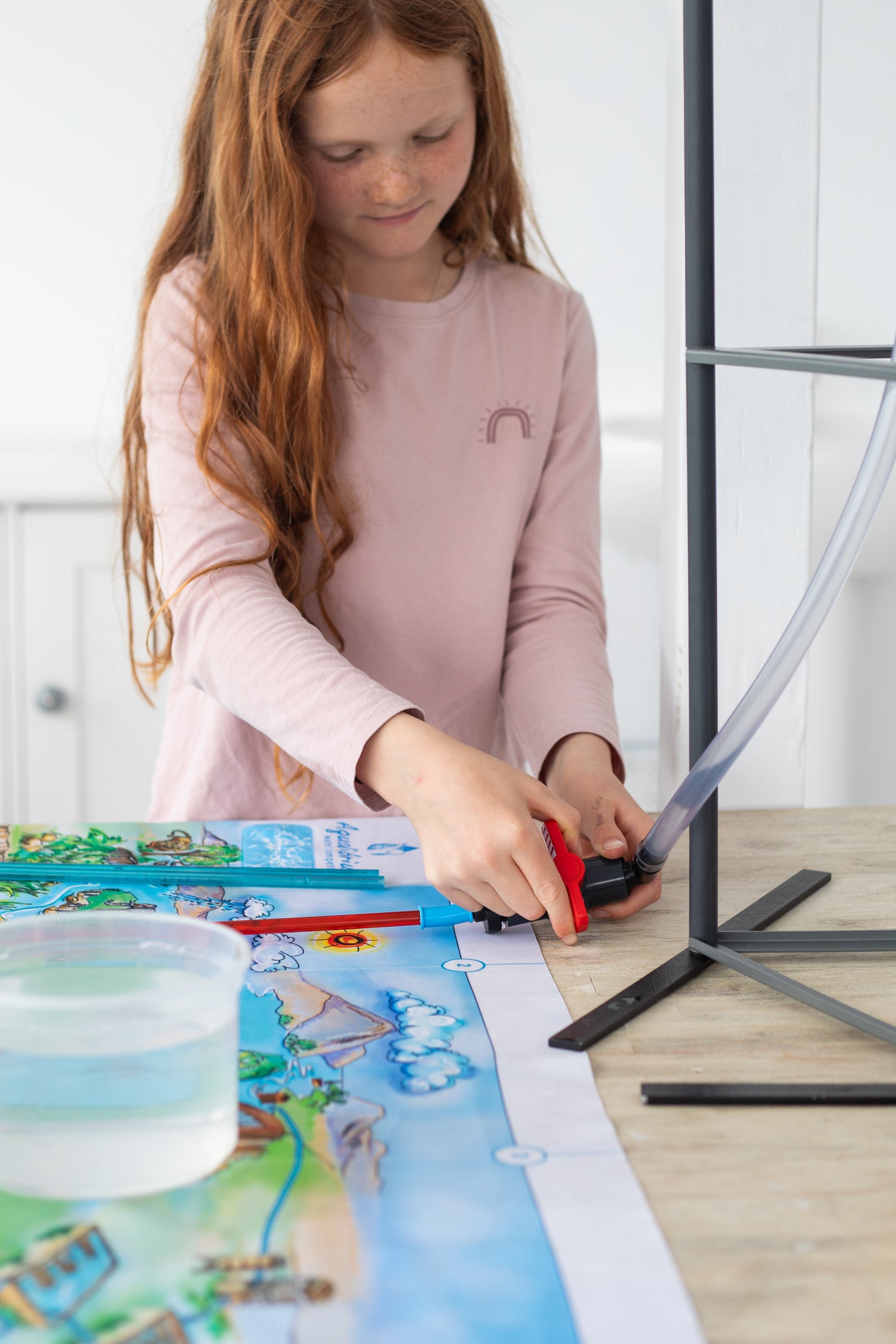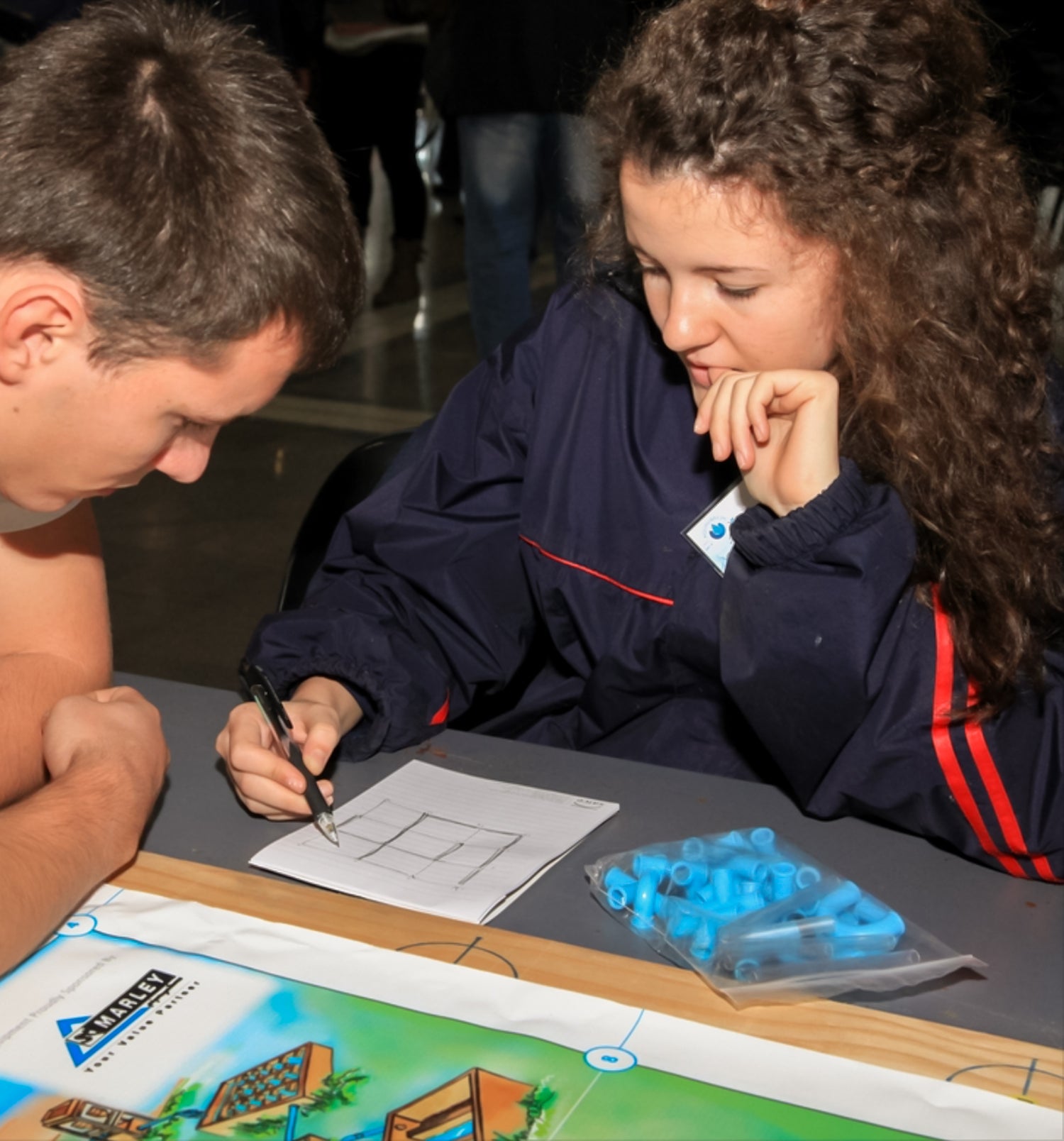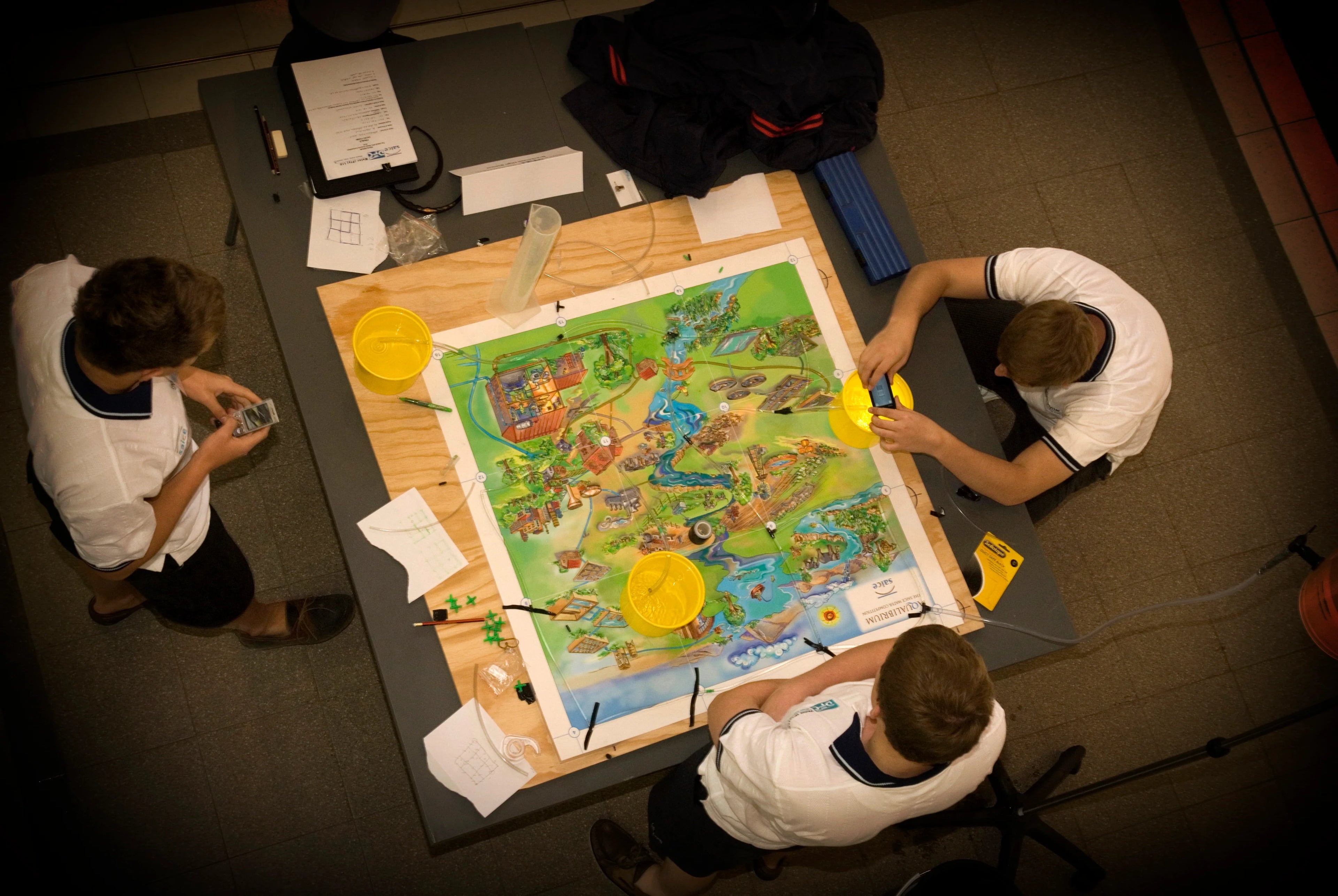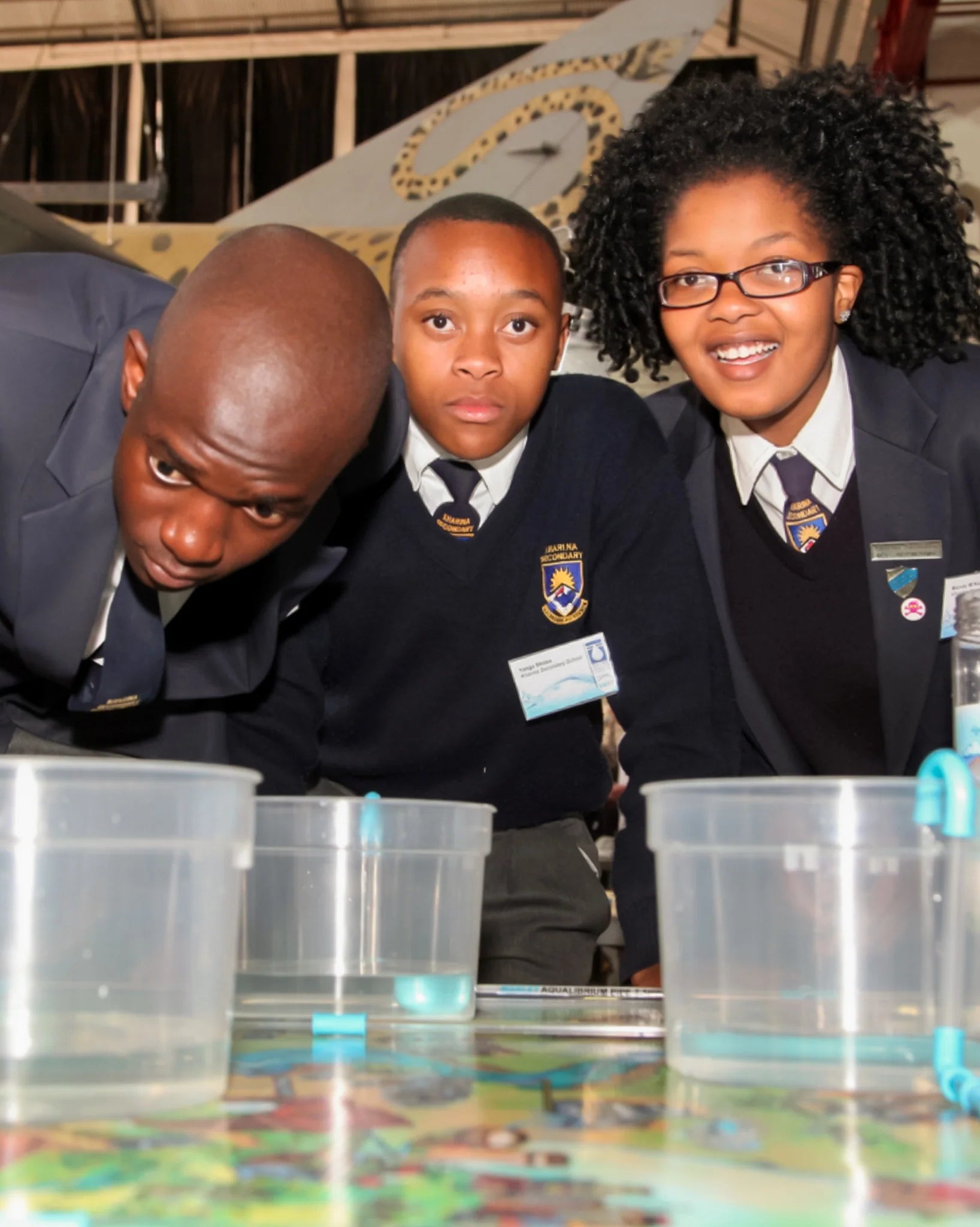
The School Challenge
The Aqualibrium challenge is used for schools outreach by NGOs, professional institutes and educational organisations across the world. It is also popular with teachers who use the Aqualibrium challenge to support learning and enrichment in the classroom.
School outreach was the original reason for the development of the Aqualibrium challenge. The first ever Aqualibrium challenge happened in 2003 when the South African Institution of Civil Engineering(SAICE) ran a national Aqualibrium schools competition as part of their centenary celebrations. The Aqualibrium challenge has become one of the most popular events on the annual SAICE calendar.
The Aqualibrium background sheet illustrates the urban water cycle in a fun and colourful way. It shows how water is abstracted from the environment, treated, distributed and used in different ways. The wastewater is then collected and treated before being released back to the environment.
For school competitions, students are given a basic demonstration of the competition and then work in groups to find their best network designs. No prior knowledge is required and even primary school kids love this challenge!
The Aqualibrium challenge caters for a large range of learning opportunities that can be adapted to address local issues in an age- appropriate way. For instance, the learning objectives for primary school students may include how water gets to our taps, where the water comes from and what happens once it goes down the drain, why we should use water sparingly and the importance of protecting our natural water sources.
For high school students, learning objectives may include concepts of physics (e.g. gravity and friction forces, and conservation of mass), mathematics (used to describe the physical phenomena), how engineers apply these concepts to design water supply systems, what the local urban water cycle looks like and what can be done to protect local water resources.

Key Learning Opportunities
- How does drinking water get to the taps in our homes?
- What happens with wastewater once it disappears down thedrain?
- The urban water cycle and ways in which water pollution occurs.
- How can we help protect our local water sources?
- How is water and wastewater treated?
- What can our school do to use water more efficiently?
- Which concepts of physics are important for flow in pipes?
- How do we engineers use mathematics to calculate flows in pipenetworks?
- Learn about careers in civil and environmental engineering.
-
280 BILLION
Configurations
-
24
Pipe Lines
-
3
Diameters
Testimonials
-
“This is an excellent experience for everyone in the classroom, including the teachers. When students get these types of experiences, they engage in real-life thinking and hands-on learning, which teachers love to incorporate! Thank you for providing such a valuable teaching tool!”
Fiona Zawadzki, B.A. (hons), B.Ed, Educational Consultant/Certified Teacher, Skye Consulting, Canada
-
“The Northeast of Brazil has historically suffered from a lack of water. We use the Aqualibrium competition as a fun activity to teach children and young people about the need to conserve water. They always love to take part in the competition!"
Thais Fontenele, Civil Engineering Student, Federal University of Ceará, Brazil
-
“I use the Aqualibrium competition to introduce high school students to the urban water cycle and water infrastructure systems. The hands-on nature of the activity helps students understand the design of water systems and what engineers do. The students have a great deal of fun while they gain valuable learning experience.”
Dr Sangmin Shin, School of Civil, Environmental and Infrastructure Engineering, Southern Illinois University Carbondale, USA
-
“I use the Aqualibrium competition for different groups including elementary school and undergraduate students, and is always a great success! There are many learning possibilities and it is easy to adapt the Aqualibrium activity to achieve different objectives for different target groups (e.g. such science class or summer camp).”
Dr Lina Sela, Department of Civil, Architectural, and Environmental Engineering, University of Texas at Austin, USA
Downloads
Aqualibrium Judging Sheet
Aqualibrium Background Picture



